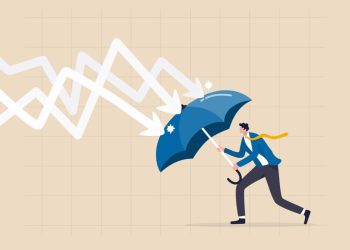 RISMEDIA, July 11, 2009-Forty-two percent of U.S. consumers have credit scores between 550 and 699. As a result, these consumers typically don’t qualify for preferred interest rates and, depending on their overall credit profile, they may not even qualify for certain loans and credit cards. The primary challenge is that most consumers don’t understand what impacts their credit profile and, more importantly, don’t know what actions they can take to help improve it. This short quiz will help test how much you know about your credit profile and how it works.
RISMEDIA, July 11, 2009-Forty-two percent of U.S. consumers have credit scores between 550 and 699. As a result, these consumers typically don’t qualify for preferred interest rates and, depending on their overall credit profile, they may not even qualify for certain loans and credit cards. The primary challenge is that most consumers don’t understand what impacts their credit profile and, more importantly, don’t know what actions they can take to help improve it. This short quiz will help test how much you know about your credit profile and how it works.
1. To have the best credit profile impact, what is the maximum amount of your monthly credit line you should use?
a) 70%
b) 30%
c) 50%
2. What is the top contributing factor to what makes a good credit score?
a) Length of credit history
b) Amounts you owe
c) Payment history
3. If you pay 2% each month on your credit card (typical minimum payment), when will you pay off a $3,000 balance at 10% interest?
a) 18 years
b) 6 years
c) 3 years
4. After paying off a high-interest credit card, you should:
a) Continue using it occasionally
b) Close the account
c) Use the full amount of available credit every month
5. Applying for credit cards in order to just receive a free sign-up gift (t-shirts, mugs, etc.) has no impact on my credit profile?
True or False
6. Rewards points on credit cards are a good deal when:
a) I get cash back
b) I get free airline tickets
c) I carry no balance each month
7. To have a credit score, I must have at least one creditor reporting activity on my credit report for:
a) 12 months
b) 8 months
c) 6 months
8. Credit bureaus that manage your personal credit report data and credit scores are a:
a) Government entity
b) Non-profit agency
c) Regular business corporation
9. Banks and credit card companies think you are credit-worthy by how many credit offers you receive by mail?
True or False
10. Credit scores are used by lenders mainly to:
a) Tell how I compare to other consumers
b) Tell if I make my payments on time
c) Predict the likeliness that I will repay my loan on time
Answers: 1 – c, 2 – c, 3 – a, 4 – a, 5 – False, 6 – c, 7 – c, 8 – c, 9 – False, 10 – c
If you find you answered more than half of these questions wrong, you’re not alone. In a survey, we found that the majority of consumers do not know the answers to these and similar types of questions. On average, U.S. consumers have a total of 13 credit obligations on their credit report. These include installment loans (auto loans, mortgage loans, student loans, etc.) and credit cards (such as department store charge cards, gas cards, or bank cards). As a result of the numerous outstanding credit obligations, combined with the lack of proper knowledge and guidance about what impacts their credit profile, the average U.S. consumer ends up spending thousands of dollars on unnecessary interest expenses.
The good news is that it’s not too late. With a good understanding and proper guidance of how credit works, consumers can learn how to effectively manage their personal credit profile. Improvements can be obtained fairly rapidly with credit coaching services and the proper changes (no more trial-and-error stuff). Our survey group of customers who participated in a credit optimization and coaching service saw their credit scores increase by an average of 30 points in just four months as a result of more effectively managing their credit. More than ever, every responsible consumer should proactively evaluate, optimize and protect their credit before they have a required credit need or an issue arises.
Jeff Mandel is president and Marlin Brandt is COO of ApprovalGUARD.
For more information, please visit www.ApprovalGUARD.com.










